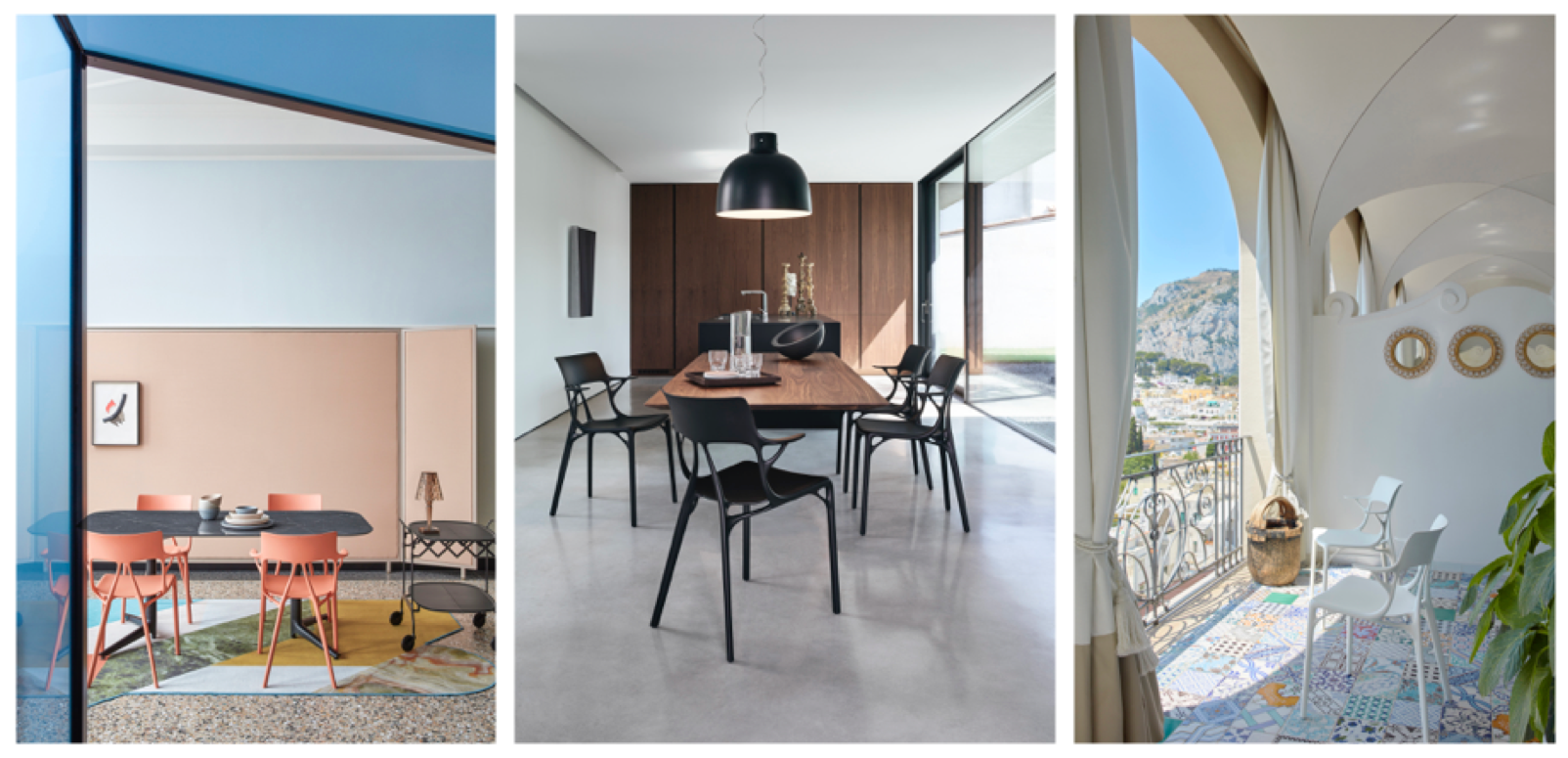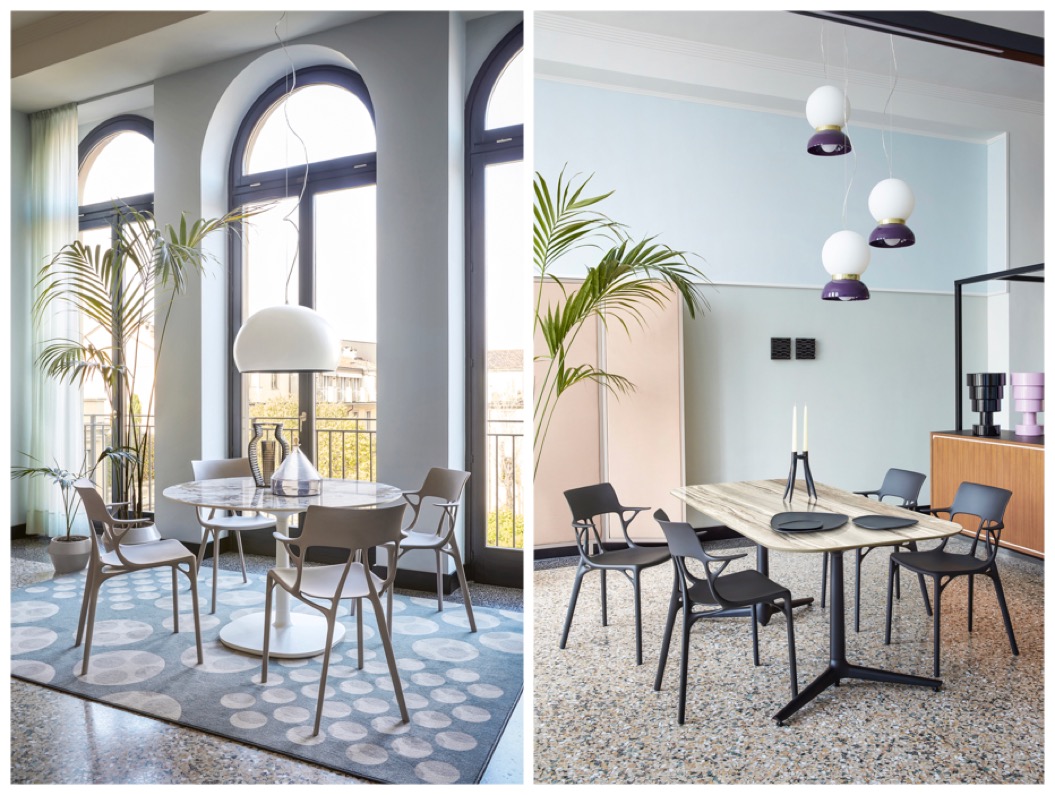
In April 2019, a milestone was reached in design history when the first chair created through a collaboration between humans and artificial intelligence was introduced at Milan Design Week. The "A.I. Chair" is the result of a partnership between renowned designer Philippe Starck, the Italian brand Kartell, and Autodesk. This groundbreaking project marked a new era where AI plays a central role in the creative process.
The A.I. Chair was developed using generative design, an innovative approach that leverages cloud-based computing to generate optimized solutions for products, structures, and systems. By utilizing AI algorithms, designers can explore countless possibilities, leading to more efficient and sustainable outcomes.
As of now, the A.I. Chair is available for purchase. It has been officially launched at two major international design fairs—IMM in Cologne and Maison & Objet in Paris. What makes this chair even more impressive is that it is manufactured entirely from 100% recycled materials, marking a significant step toward environmental responsibility.
The Kartell team has used pure and uncontaminated recycled material that not only meets aesthetic standards but also ensures structural integrity. This is the first time that the globally recognized furniture company is using materials derived solely from its own industrial waste, demonstrating a strong commitment to sustainability and circular design principles.
"This chair is a perfect example of how the design and manufacturing industry is moving towards sustainability and circularity," says Arthur Harsuvanakit, Senior Designer at Autodesk. "It shows that we can create beautiful, functional products while minimizing our environmental impact."
Kartell has long been dedicated to sustainability. In 2019, on the occasion of their 70th anniversary, they launched a manifesto called "Kartell Loves the Planet," which outlines their commitment to eco-friendly practices. With the A.I. Chair, the company continues to push forward in its mission to protect the environment and promote responsible production methods.
"Unconsciously, we're trying to produce objects with less material. Ultimately, design is about the theory and strategy to reduce the amount of material used. That's why it was so important to use the minimum material possible for this chair. We should be trying to use less material with the objects we create," says Starck.
Upcycling Material and Circular Design
With an expected 10 billion people living on the planet in the coming decades, we must rethink how we use materials and energy in a responsible and circular way. For years, products have been designed as if resources were infinite. However, reducing our negative impact on the planet is no longer optional—it's a necessity.
Learn more about Autodesk’s efforts with design and circularity.
Circularity involves using materials in a closed-loop system, aiming to reduce waste by reusing, refurbishing, remanufacturing, recycling, and upcycling. And at the heart of this movement is design. "Circularity is not just about recycling. It's about truly embracing the idea of upcycling and ensuring that the materials we use in our products can be repurposed for future use," said Lynelle Cameron, CEO of Autodesk Foundation and Vice President of Sustainability for Autodesk.
Claudio Luti, Chairman of Kartell, added, "It's not about simply creating a product that looks green, but about developing an industrial strategy that spans the entire manufacturing process—from business planning and marketing to communication and sales networks."

How Injection Molding Played a Key Role
During the chair's design process, injection molding was chosen as the most suitable method for mass production. However, this technique comes with specific constraints, especially regarding wall thickness. "We had to push the tooling to produce solutions with minimal wall thickness for injection molding. That meant figuring out new strategies and adjusting our algorithms to meet those constraints," explained Harsuvanakit.
"With generative design, you are able to, in order of magnitude, create more solutions and strive for better ones faster," he added. This project showcases the potential of AI to revolutionize traditional manufacturing processes and drive innovation in sustainable design.
Here's to more opportunities to design and make with less material and more sustainability. The future of design is here, and it's smarter, cleaner, and more conscious than ever before.
Four-flight Compounding System Based on 3-flgiht compounding design, XINDA develops latest new technology with 4 flights. The XINDA SKW Kneader each spiral is broken by four gaps per revolution to locate the kneading flights. Four rows of kneading pins, which are individually inserted in the barrel per 90 degree, are intermeshed with these flights. With the same L/D ratio, it achieves more mixing, but less friction heat. The reciprocating wobble-box synchronizes the shaft rotation and oscillation so that each revolution of the screw is accompanied by one full stroke forward and backwards. This ensures optimal distributive and dispersive mixing with minimal energy consumption.
Compounding System Line,Newest Co-Kneader,Co-Kneader Bio-Degradable Compounds,Forming Masterbatch Extruder
JIANGSU XINDA TECH LIMITED , https://www.xindacompounding.com
